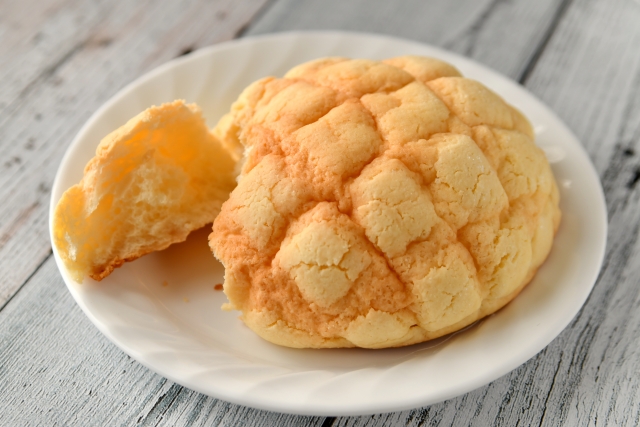is called “melonpan” in Japanese. Looking at the spelling alone, one might think it’s bread flavored like melon, but in reality, melon is not included. Let’s talk about the allure of melonpan.
First and foremost, let’s discuss its appearance. Melonpan is covered with a cookie dough exterior, adorned with a unique pattern resembling honeycomb. This distinctive pattern is visually appealing and can whet anyone’s appetite just by looking at it. Additionally, as its name suggests, some melonpans feature green dough, mimicking the appearance of a real melon. This unique appearance is one of the reasons why it’s beloved by many.
Next, let’s talk about its texture and flavor. Melonpan has a crispy cookie dough exterior and a soft bread interior. This combination enhances the joy of eating it. The sweetness of the cookie dough and the subtle saltiness of the bread dough complement each other perfectly, providing a delightful sensation with every bite. Just one mouthful can evoke a sense of happiness.
Furthermore, melonpan is a popular snack that’s readily available. You can easily purchase it from convenience stores, supermarkets, and various other places. Many people grab one during outings or snack times due to its convenience and deliciousness. It has become an indispensable part of daily life for many in Japan.
Overall, melonpan is a baked treat that embodies a trifecta of allure: visual beauty, enjoyable texture, and convenience. Its unique appearance and mildly sweet flavor make it something that everyone would want to try at least once. There are various theories about the origin of the name “melonpan,” but one common explanation is that the surface stripes or lattice pattern resembles a muskmelon. While it’s unclear who named it, it has been a long-standing favorite among people of all ages in Japan.

